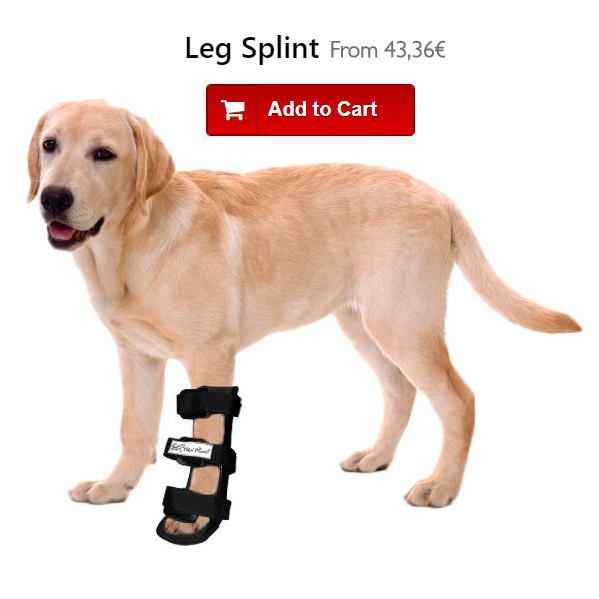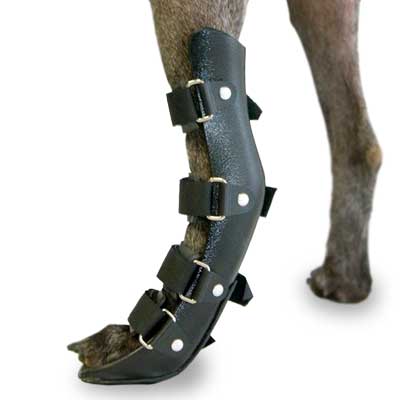Before using a splint it is important to make sure that the size is correct, a small splint will be too tight while a big one will dance around and not give proper support. The splints are made from thermo-deformable plastic, they can be heated and adapted to the dog, either widening or closing slightly. The angle should NOT be modified.
For maintenance and care using a damp cloth should be enough, or it is possible you may want to clean the outside carefully with brush. Using hot water and soap is not recommended, as the splint should not get too wet.
Placing the splint
The first times you put on the splint it is better if you have someone helping you to keep it in place or distract the dog.
We can put the splint on the forelimb with the dog sitting or standing (with the four limbs on the ground; putting the splint on with the dog lying down in the lateral decubitus or prone position is not recommended).
Hindlimb splints should be placed with the dog standing.
The dog’s skin should be clean and dry, it is very important that the skin is dry  because otherwise skin irritations, redness or small ulcers can appear.
because otherwise skin irritations, redness or small ulcers can appear.
Placing a tubular bandage or a cohesive elastic bandage around the dog’s leg is advisable. The role of this bandage is to increase comfort. Make sure it is not too tight, using it will make the dog tolerate the splint better.
The splint is placed on the back of the front leg leaving the velcro straps at the front. First place the dog’s paws in the bottom of the splint, leaving the fingers relaxed, these should protrude from the splint.
Place the front protective straps so that they fall right in the middle of the front of the dog’s paw for more comfort. First adjust the lower leg velcro making sure that the dog’s leg is completely adjusted to the splint, then adjust the middle strap and finally the top.
Unless your vet has indicated otherwise, the dog should not wear the splint all day long, normally at night the dog can sleep without it and during the day we will mainly use it during times of increased exercise. For certain neurological problems or after fissures or fractures, with the advice of your vet, they may be indicated for permanent use. In this last case we should regularly check the animal’s skin.
Ortocanis Technical Team


